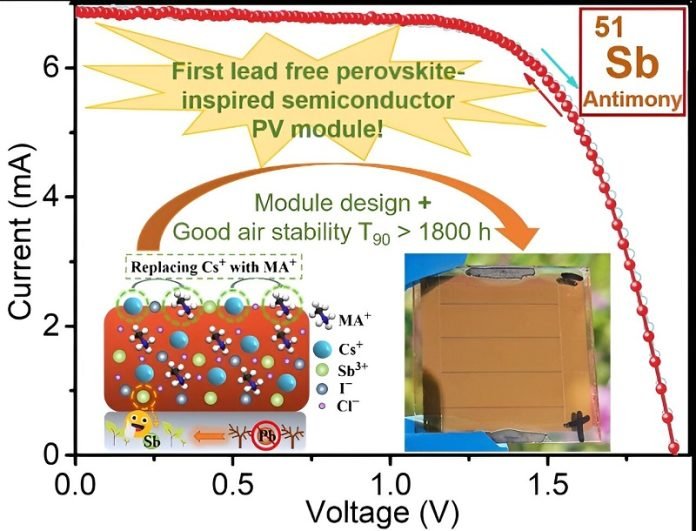
Solar power is getting a significant boost thanks to some groundbreaking work by scientists at the Center for Hybrid and Organic Solar Energy (CHOSE) at Tor Vergata University of Rome.
They’ve made a big leap forward by creating a new type of solar panel that doesn’t use some of the harmful materials found in traditional ones.
Typically, solar panels made from a material called perovskite include lead (Pb) or tin (Sn), which have their downsides.
Lead can be toxic, and tin isn’t very stable, making it tricky to work with.
But this team’s innovation sidesteps these issues by using antimony (Sb) instead. This switch to antimony, a less problematic element, could make these solar panels not only safer but also more environmentally friendly.
The researchers didn’t stop at just swapping out materials. They also introduced a clever mix of ingredients that make these new solar cells work better and last longer.
By adding two different types of ions into the mix, they managed to increase the efficiency of converting sunlight into electricity by 81% compared to previous attempts that used only one type of ion.
Even more impressive, these new panels are much more durable, maintaining their performance after being exposed to air for about 1,800 hours. That’s a big deal because air can often degrade the materials in solar panels, shortening their useful life.
What’s really exciting is that these improvements mean the whole process of making solar panels could get simpler and cheaper. The researchers showed that they could do all the necessary steps to make a panel, including the precise cutting and shaping with lasers, in the open air.
This is a big change from the usual need to work in special, air-controlled environments, which can be costly and complicated.
Looking ahead, the team is focused on making these solar cells even more efficient. They believe this work could pave the way for producing solar power on a larger scale, using materials that are better for the planet.
This development is promising for the future of solar energy, offering a path to more sustainable and less toxic solar panels. As the researchers continue to refine their approach, the dream of cleaner, more accessible solar power for everyone gets a little closer to reality.



